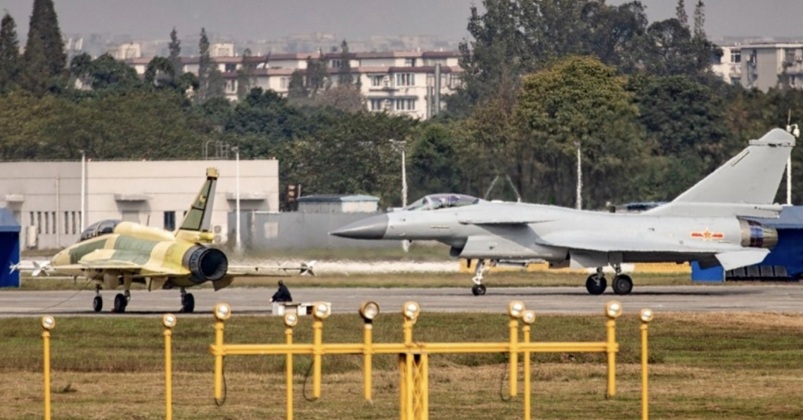News
Pakistan Air Force Receives First JF-17 Block III Fighter Squadron with ‘J-20 DNA’ – Reports

The Pakistan Air Force has reportedly inducted its first unit of JF-17 Block 3 fighter jets into service, which represent its second class of fighter with ‘4+ generation’ capabilities following acquisitions of multiple squadrons’ worth of J-10C fighters from China in 2022. Where the J-10C acquisition surprised many analysts, and was only announced in late 2021, the JF-17 Block 3 has been awaited since the mid 2010s and is expected to be produced primarily for Pakistani defence needs as part of a joint Sino-Pakistani program. The fighter revolutionises the capabilities of the JF-17 design, and is considered a ‘4+ generation’ fighter with fifth generation level avionics and weaponry. The fighter is one of four fourth generation classes which have been produced using many of the technologies developed for China’s J-20 fifth generation fighter, which began deliveries to the air force in 2016, and has thus been referred to as having ‘J-20 DNA.’ This mirrors references in Western commentaries to the latest variants of the American F-16 ‘4+ generation’ fighter the F-16 Block 70/72 as having ‘F-35 DNA.’ The J-20 and F-35 are the only fifth generation fighters both in production and fielded at squadron level strength.
While the J-10C is a lightweight fighter from a similar weight range to the F-16, the JF-17 is from a smaller weight range still comparable to the Swedish Gripen E/F. Like the Gripen it was designed with very minimal operational costs and maintenance needs, allowing for a large fleet to be fielded and high availability rates to be maintained, but at the price of a relatively modest flight performance. The JF-17 Block 3 heavily compensates for this with the sophistication of its avionics and weaponry, which make it undoubtedly the most capable fighter in the Pakistani fleet other than the J-10C and provide some important advantages over rival fighters from neighbouring India – the large majority of which lack similarly advanced radars or missiles.
The JF-17 Block 3’s avionics suite including its controls and cockpit displays bear a resemblance to those of the J-20, with its helmet mounted sights and heads up displays allowing it to capitalise on a new range of armaments. These pair particularly well with the PL-10 infrared guided air to air missile, a close contender for the title of the most advanced of its kind in the world, which uses aerodynamic and thrust-vector controls, which are paired with advanced helmet mounted cueing systems to exploit its extremely high manoeuvrability. This allows Pakistan’s new fighters to engage targets at very extreme angles without the need to manoeuvre the fighter itself. The missile provides a comfortable performance advantage over the American AIM-9X and Russian R-73.

It remains uncertain how many JF-17 Block 3s will be produced, with some reports indicating that a significantly greater production run is expected compared to the relatively unremarkable prior models which had very basic fourth generation capabilities. The fighter provides a highly cost effective means of modernising fighter units to field cutting edge sensors, data links and armaments, and could be used to replace the majority of Pakistan’s ageing Cold War era Mirage and J-7 fighters. Beyond Pakistan, Myanmar has reportedly shown a strong interest in also producing the class under license, while the list of potential clients is very long with Iran being a notable one. Among the fighter’s outstanding features are its PL-15 long range air to air missiles, which are the only active non-Japanese air to air missile confirmed to use inbuilt AESA radars for inertial guidance and can outrange competing Russian and American missiles, a nose-mounted AESA radar, as well as its high composite airframe and the use of the new Chinese WS-13 engine for an improved flight performance relative to older JF-17 models.












